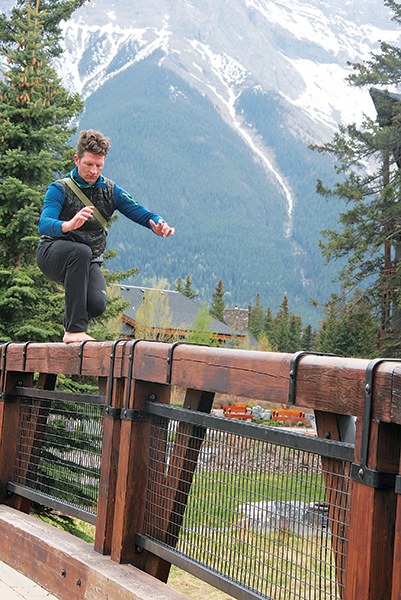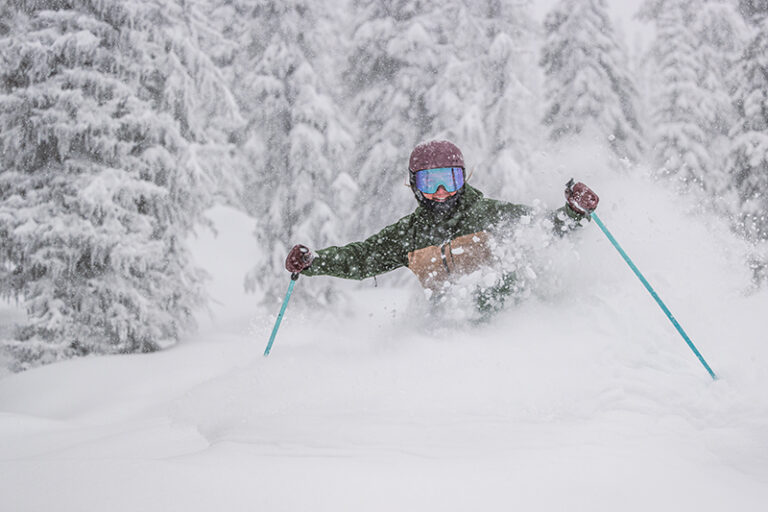Danny Clark stands two feet off the ground, balancing on the long end of a block of firewood. He wobbles back and forth but in a controlled, rhythmic way.
“I went to a yoga class recently, and the instructor did a one-leg balance series to see if she could make me lose my balance. She couldn’t,” says Clark, performance director and Chief Operating Officer of MovNat, a natural movement-based wellness company.
Clark used to be based in Sandpoint, Idaho, where he helped run a conventional gym and worked as a trainer. He currently resides in Sante Fe, where he helps run MovNat as a company and works to expand it internationally.
Since he has taken up balancing and other core natural movements, his overall fitness has improved. Improving reactive balance helps with every outdoor sport, including snowboarding, skiing, climbing, mountain biking, trail running and even hiking. Clark has realized that, if you’re climbing a mountain or crossing a creek, it doesn’t matter if you can pick up a set of weights—or even a boulder—that weighs 250 pounds. However, it does matter if you can navigate wobbly or uneven surfaces.

He also believes that boosting your ability to balance can transfer to confidence in your sport. But for many people balance is hard to maintain unless it’s practiced in artificial situations, such as lifting one foot briefly in yoga. And even then, people frequently topple or tap out. They rarely have complete control over their bodies. “It’s one thing to balance. It’s another thing to balance and have control,” says Clark.
Of course, in the natural world, balance rarely looks like standing still on a flat surface; balance is what happens when you correct in changing snow conditions while you ski or snowboard down a mountain. It looks like leaping onto a wet rock in a stream or changing how you navigate a log because of the weight of a backpack.
Balancing on a swaying block of wood is not something that can be learned overnight. Clark emphasizes the need for step-by-step progressions, starting with one foot on a flat surface, and then progressing to something like a two-by-four on the floor. Once you can navigate a strip of wood forwards, backwards, and sideways, even while leaning over or otherwise shifting your center of gravity, you can progress to uneven surfaces like branches, logs, or slightly unstable rocks.
Self-correcting in unstable situations is the ultimate goal. For one thing, improving your balance and specifically your reactive balance can help prevent injury. If you are capable of correcting during unexpected turbulence, you fall less frequently. Finally, there are physiological benefits to improving balance, including better posture, more hip and torso stability, and more foot and knee strength.
Practicing balance at home is easier on your body than practicing on the slopes, says Clark. “It’s hard to slow down when you ski, but you can slow things down when you’re balancing on a two-by-four.” //
Katie Botkin is the managing editor of MultiLingual magazine. She enjoys climbing, dance, snowboarding and natural movement. She wrote about backcountry fashion in August.













